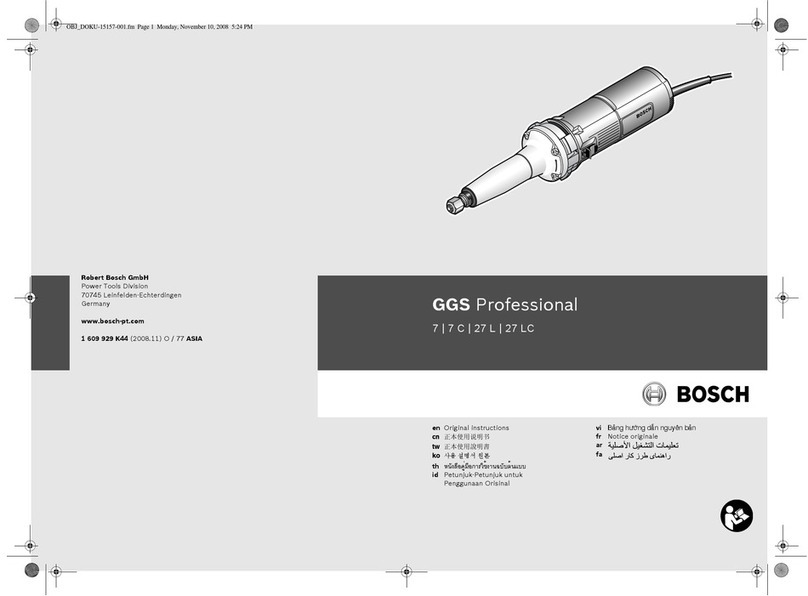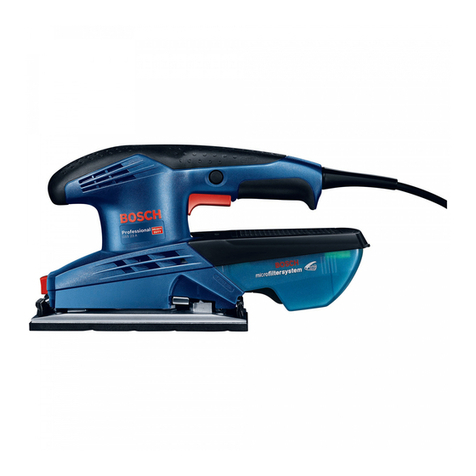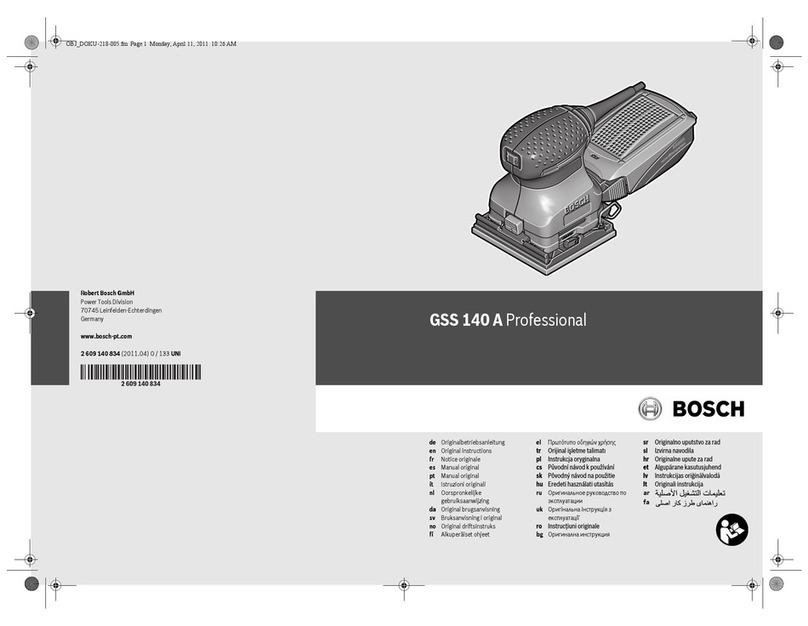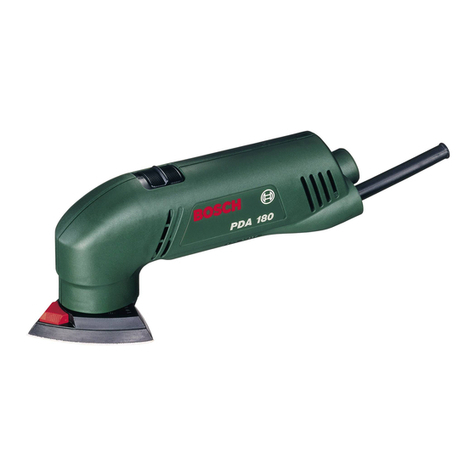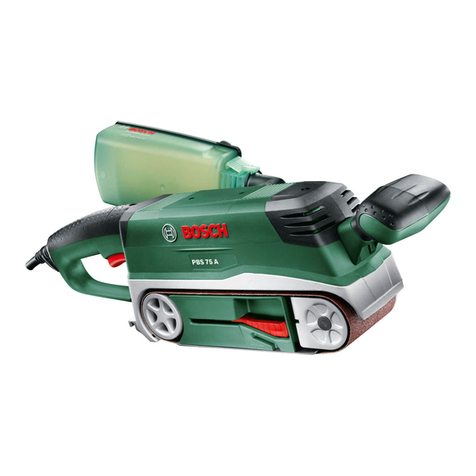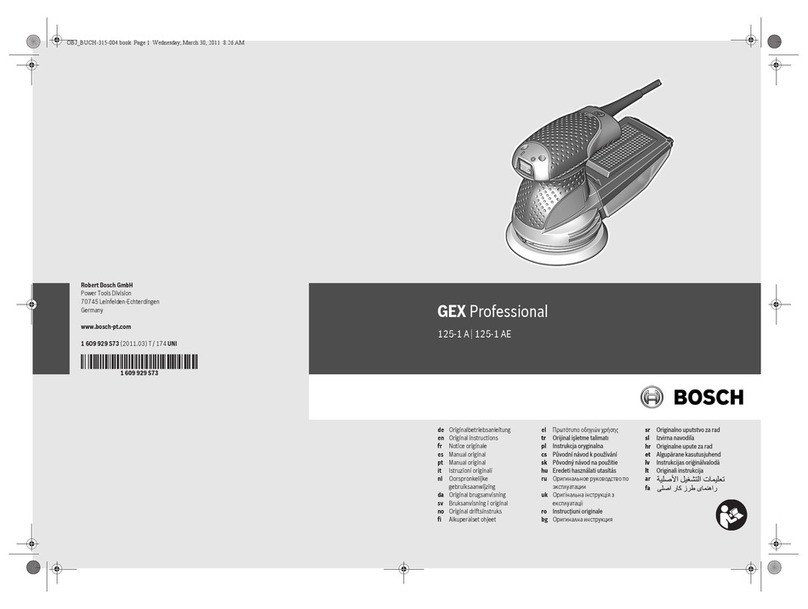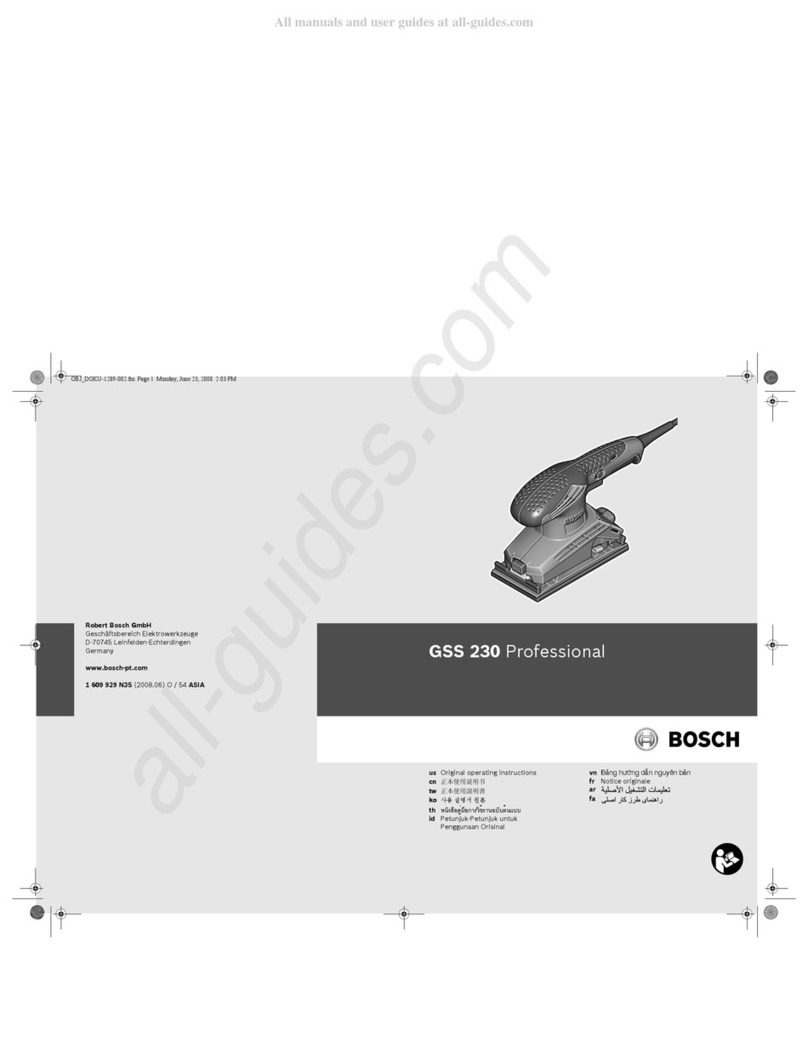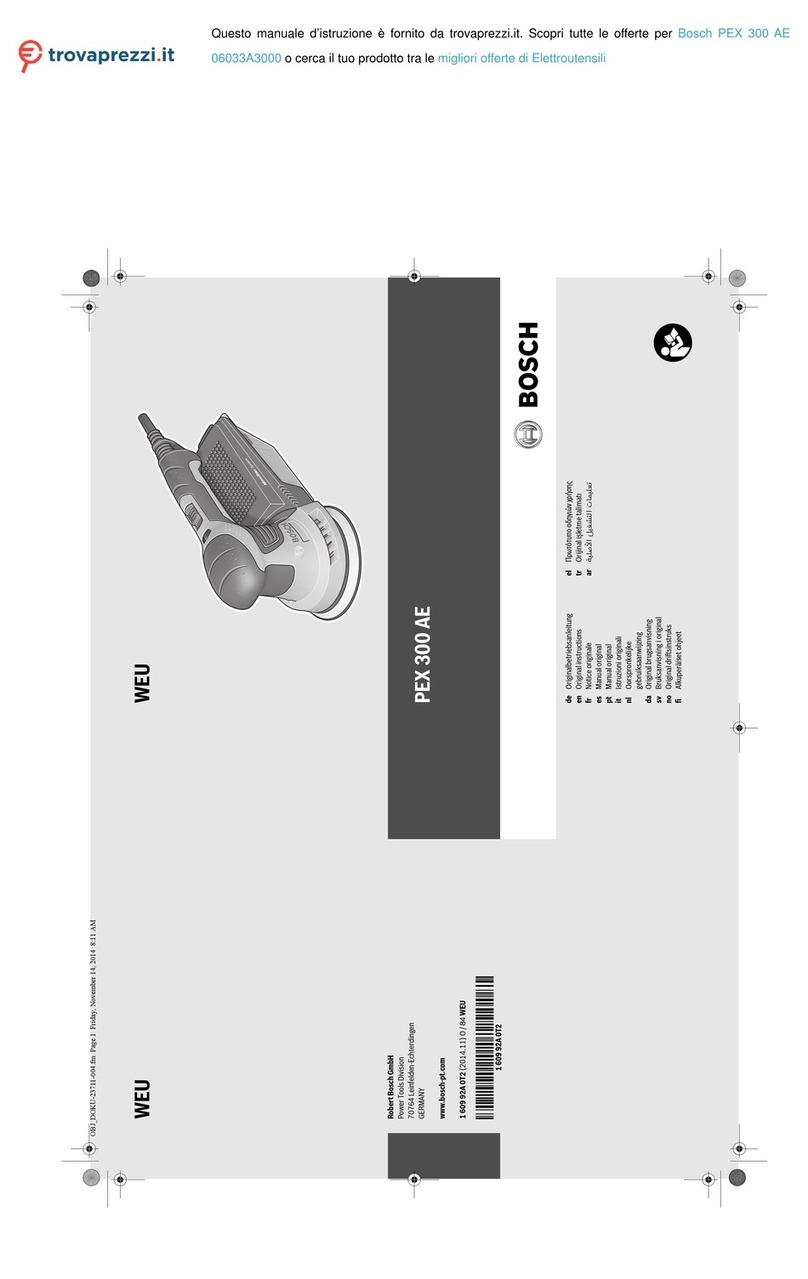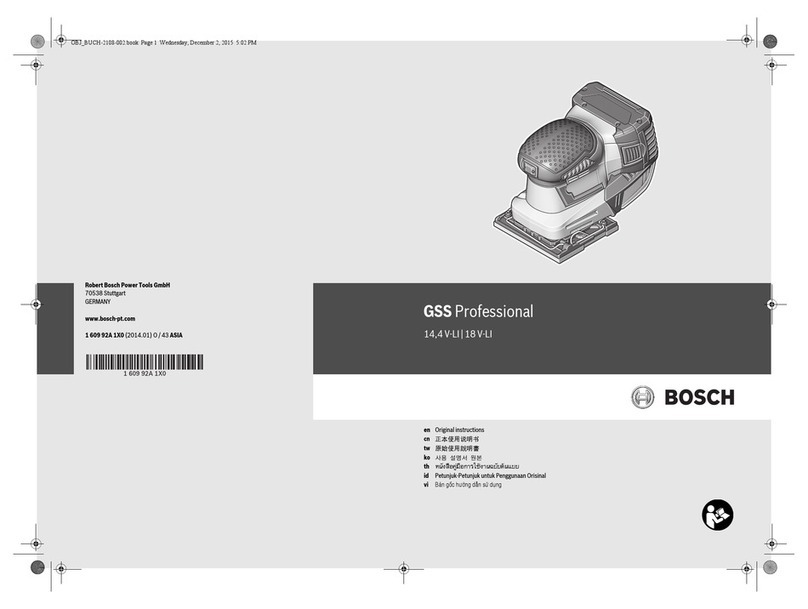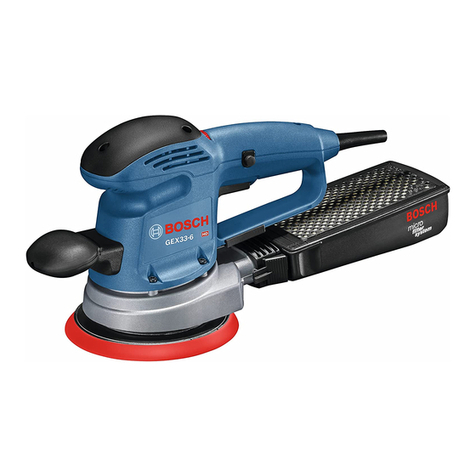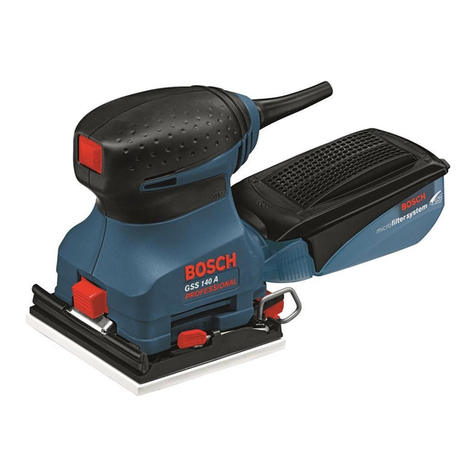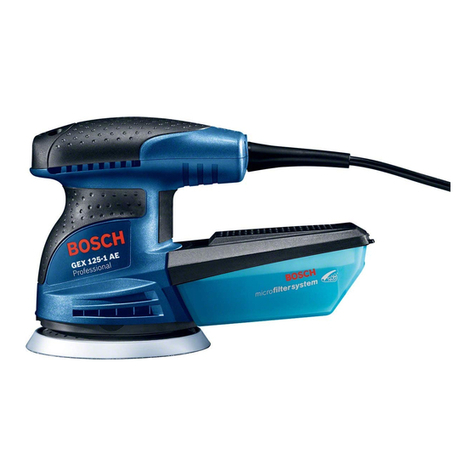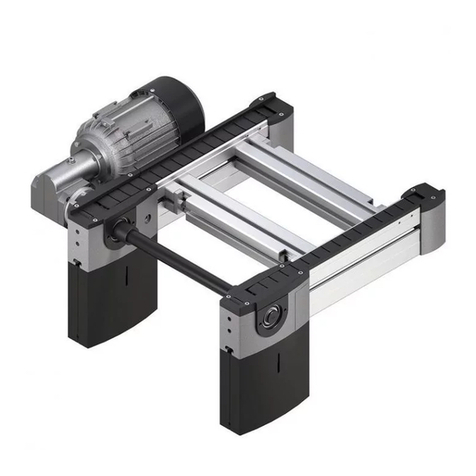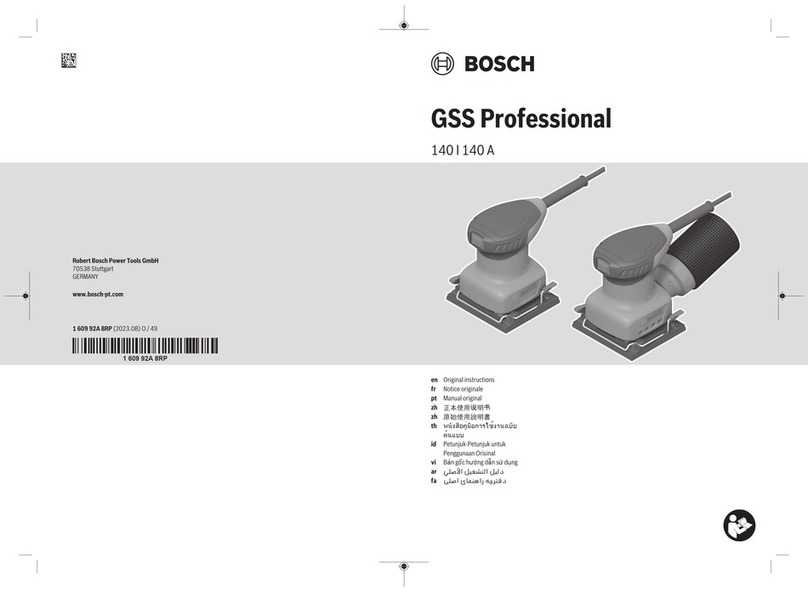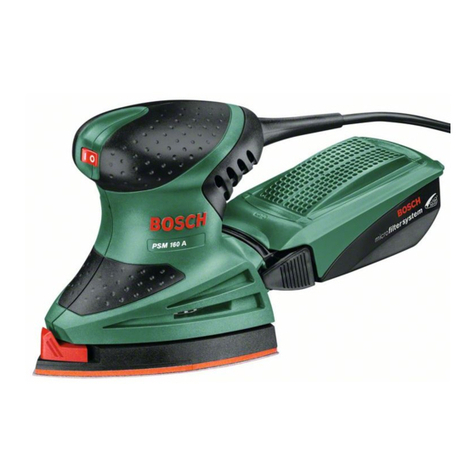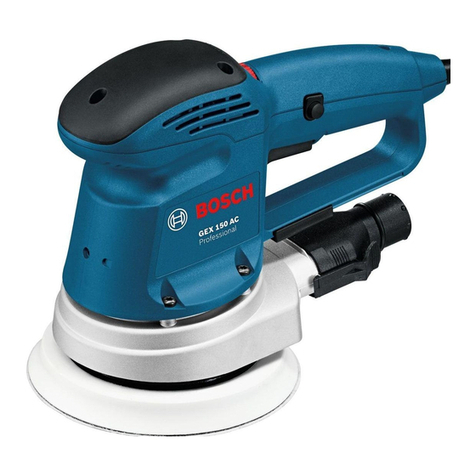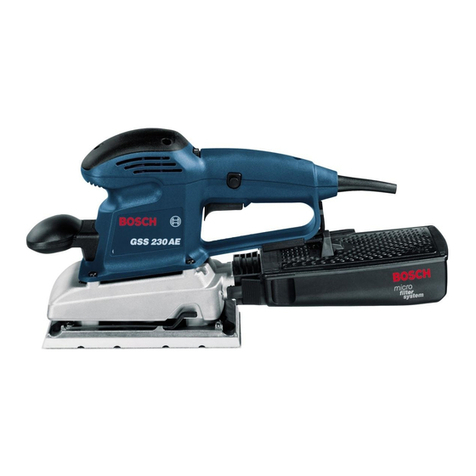
6| Deutsch
3 609 929 C71 | (7.8.13) Bosch Power Tools
Deutsch
Sicherheitshinweise
Allgemeine Sicherheitshinweise für Druckluft-
werkzeuge
Lesen und beachten Sie vor dem Ein-
bau, dem Betrieb, der Reparatur, der
WartungunddemAustauschvonZubehörteilen sowie vor
der Arbeit in der Nähe des Druckluftwerkzeugs alle Hin-
weise. Bei Nichtbeachtung der folgenden Sicherheitshinwei-
se können ernsthafteVerletzungen die Folge sein.
Bewahren Sie die Sicherheitshinweise gut auf und geben
Sie sie der Bedienperson.
Arbeitsplatzsicherheit
Achten Sie auf Oberflächen, die durch den Gebrauch
der Maschine rutschig geworden sein können, und auf
durch den Luft- oder den Hydraulikschlauch bedingte
Stolpergefahren. Ausrutschen, Stolpern und Stürzen
sind Hauptgründe für Verletzungenam Arbeitsplatz.
Arbeiten Sie mit dem Druckluftwerkzeug nicht in ex-
plosionsgefährdeter Umgebung, in der sich brennbare
Flüssigkeiten, Gase oder Staub befinden. Beim Bearbei-
ten des Werkstücks können Funken entstehen, die den
Staub oder die Dämpfe entzünden.
Halten Sie Zuschauer, Kinder und Besucher von Ihrem
Arbeitsplatz fern, wenn Sie das Druckluftwerkzeug be-
nutzen.BeiAblenkungdurch anderePersonenkönnenSie
die Kontrolle über das Druckluftwerkzeug verlieren.
Sicherheit von Druckluftwerkzeugen
Richten Sie den Luftstrom niemals auf sich selbst oder
gegen andere Personen und leiten Sie kalte Luft von
den Händen fort. Druckluft kann ernsthafte Verletzungen
verursachen.
Kontrollieren Sie Anschlüsse und Versorgungsleitun-
gen. Sämtliche Wartungseinheiten, Kupplungen und
Schläuche müssen in Bezug auf Druck und Luftmenge ent-
sprechendden technischen Daten ausgelegt sein. Zu ge-
ringer Druck beeinträchtigt die Funktion des Druckluft-
werkzeugs, zu hoher Druck kann zu Sachschäden und zu
Verletzungen führen.
SchützenSiedieSchläuchevorKnicken,Verengungen,
Lösungsmitteln und scharfen Kanten. Halten Sie die
Schläuche fern von Hitze, Öl und rotierenden Teilen.
Ersetzen Sie einen beschädigten Schlauch unverzüg-
lich. Eine schadhafte Versorgungsleitung kann zu einem
herumschlagenden Druckluftschlauch führen und kann
Verletzungen verursachen. Aufgewirbelter Staub oder
Späne können schwere Augenverletzungen hervorrufen.
Achten Sie darauf, dass Schlauchschellen immer fest
angezogen sind. Nicht fest gezogene oder beschädigte
Schlauchschellen können die Luft unkontrolliert entwei-
chen lassen.
Sicherheit von Personen
Seien Sie aufmerksam, achten Sie darauf, was Sie tun
und gehen Sie mit Vernunft an die Arbeit mit einem
Druckluftwerkzeug. Benutzen Sie kein Druckluftwerk-
zeug, wenn Sie müde sind oder unter dem Einfluss von
Drogen, Alkohol oder Medikamenten stehen. Ein Mo-
ment der Unachtsamkeit beim Gebrauch des Druckluft-
werkzeugs kann zu ernsthaften Verletzungen führen.
Tragen Sie persönliche Schutzausrüstung und immer
eine Schutzbrille. Das Tragen persönlicher Schutzausrüs-
tung, wie Atemschutz, rutschfeste Sicherheitsschuhe,
Schutzhelm oder Gehörschutz, nach den Anweisungen Ih-
res Arbeitgebers oder wie nach den Arbeits- undGesund-
heitsschutzvorschriften gefordert, verringert das Risiko
von Verletzungen.
Vermeiden Sie eine unbeabsichtigte Inbetriebnahme.
Vergewissern Sie sich, dass das Druckluftwerkzeug
ausgeschaltet ist, bevor Sie es an die Luftversorgung
anschließen, es aufnehmen oder tragen.WennSiebeim
Tragen des Druckluftwerkzeugs den Finger am Ein-/Aus-
schalter haben oder das Druckluftwerkzeug eingeschaltet
an die Luftversorgung anschließen, kann dies zu Unfällen
führen.
Entfernen Sie Einstellwerkzeuge, bevor Sie das Druck-
luftwerkzeugeinschalten.EinEinstellwerkzeug,dassich
ineinemdrehendenTeildesDruckluftwerkzeugsbefindet,
kann zu Verletzungen führen.
Überschätzen Sie sich nicht. Sorgen Sie für einen si-
cheren Stand und halten Sie jederzeit das Gleichge-
wicht. Ein sicherer Stand und geeignete Körperhaltung
lassen Sie das Druckluftwerkzeug in unerwarteten Situati-
onen besser kontrollieren.
Tragen Sie geeignete Kleidung. Tragen Sie keine weite
Kleidung oder Schmuck. Halten Sie Haare, Kleidung
und Handschuhe fern von sich bewegenden Teilen. Lo-
ckere Kleidung, Schmuck oder lange Haare können von
sich bewegenden Teilen erfasst werden.
Wenn Staubabsaug- und -auffangeinrichtungen mon-
tiertwerdenkönnen,vergewissernSiesich,dassdiese
angeschlossensindundrichtigverwendetwerden.Das
VerwendendieserEinrichtungenverringertGefährdungen
durch Staub.
AtmenSiedieAbluftnichtdirektein.VermeidenSiees,
die Abluft in die Augen zu bekommen. Die Abluft des
Druckluftwerkzeugs kann Wasser, Öl, Metallpartikel und
Verunreinigungen aus dem Kompressor enthalten. Dies
kann Gesundheitsschäden verursachen.
Sorgfältiger Umgang mit und Gebrauch von Druckluft-
werkzeugen
BenutzenSie Spannvorrichtungen oder einen Schraub-
stock, um das Werkstück festzuhalten und abzustüt-
zen.WennSiedas WerkstückmitderHandfesthaltenoder
andenKörperdrücken,können SiedasDruckluftwerkzeug
nicht sicher bedienen.
Überlasten Sie das Druckluftwerkzeug nicht. Verwen-
den Sie für Ihre Arbeit das dafür bestimmte Druckluft-
werkzeug. Mit dem passenden Druckluftwerkzeug arbei-
WARNUNG
OBJ_BUCH-1326-002.book Page 6 Wednesday, August 7, 2013 8:59 AM
ТАШЕВ-ГАЛВИНГ ООД
www.tashev-galving.com
